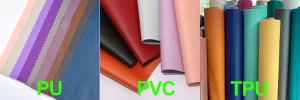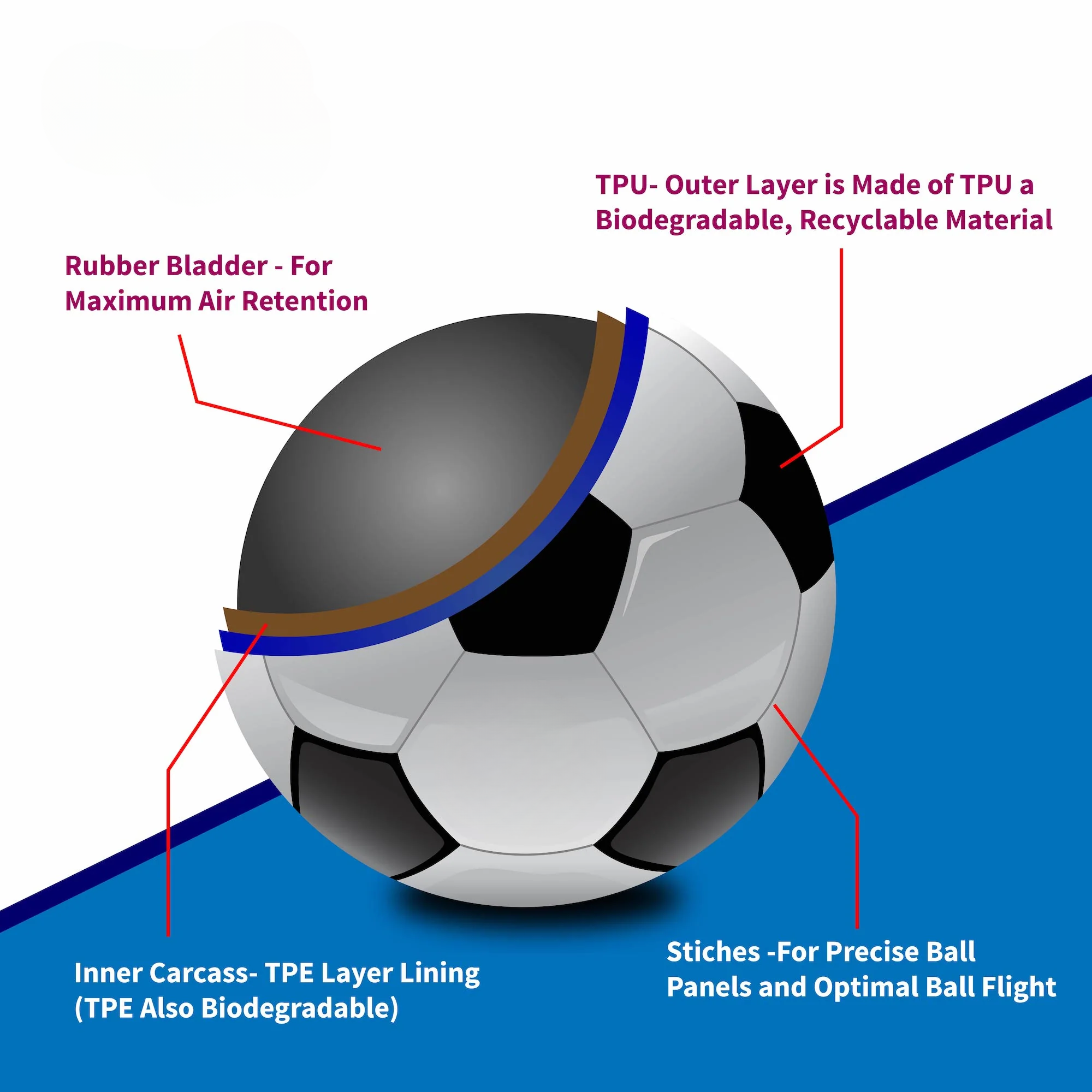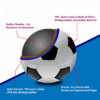- Welcome to JAMSCA [Play Loud, Stand Proud]
The Transformation of Soccer Ball Materials: From Classic Leather to Cutting-Edge Technology

Table of Contents:
- 1. The Transformation of Soccer Ball Materials: From Traditional Leather to Modern Innovations
1.1 Soccer Ball Material Guide: Leather, PU, TPU, and PVC Compared
1.2 Understanding Soccer Ball Materials: An Introduction
1.3 The Outer Layer: The Protective Shell of the Ball
1.4 The Inner Layers: The Core Structure of a Soccer Ball
1.5 Material Influence: How Different Compositions Affect Performance
1.6 PU vs. TPU vs. PVC: A Comparative Analysis of Soccer Ball Materials
Comparing Soccer Ball Materials: Leather, PU, TPU, and PVC:
Soccer balls have evolved significantly, thanks to advancements in materials and technology. From traditional leather to modern synthetics like PU, TPU, and PVC, each material plays a crucial role in the ball’s performance, durability, and feel. This guide explores how different materials influence gameplay and what sets them apart.
Understanding Soccer Ball Materials:
Over the years, soccer ball construction has transformed to enhance performance, longevity, and player experience. Today’s balls incorporate advanced materials designed to meet various playing conditions and preferences. Choosing the right material ensures optimal touch, control, and durability.
The Outer Layer: The Ball’s Surface:
The outer cover is the first point of contact between players and the ball, affecting grip, aerodynamics, and durability. The most common materials include:

1. Leather
Once the standard for professional play, leather balls were valued for their natural feel but had limitations in wet conditions.
✔ Pros: Superior touch, classic appeal.
✘ Cons: Absorbs water, loses shape over time, expensive.
2. Polyurethane (PU)
PU is a popular choice for high-quality soccer balls, balancing durability, affordability, and performance.
✔ Pros: Water-resistant, durable, and mimics leather’s soft touch.
✘ Cons: Slightly less premium feel compared to TPU.
3. Polyvinyl Chloride (PVC)
PVC is commonly used for budget-friendly and promotional soccer balls due to its cost-effectiveness.
✔ Pros: Highly durable, affordable, and weather-resistant.
✘ Cons: Lacks the soft touch of PU or TPU, heavier feel.
4. Thermoplastic Polyurethane (TPU)
TPU is a high-performance material used in premium soccer balls, offering exceptional durability and playability.
✔ Pros: Excellent touch, water resistance, and enhanced aerodynamics.
✘ Cons: Higher cost compared to PU and PVC.
The Inner Layers: The Ball’s Core
While the outer layer defines the feel, the inner layers determine the ball’s responsiveness, bounce, and air retention.
1. Bladder
The bladder holds air and affects the ball’s responsiveness.
Butyl Bladder: Offers superior air retention but is slightly heavier.
Latex Bladder: Provides a softer feel and better bounce but requires frequent inflation.
2. Lining
Multiple layers of textile material surround the bladder, enhancing shape retention and durability.
How Materials Affect Performance:
The choice of material directly impacts key aspects of gameplay:
Flight Stability: Outer material and panel design influence aerodynamics.
Touch & Control: PU and TPU offer a softer, more responsive feel.
Durability: TPU and PU withstand wear and tear better than PVC.
Water Resistance: PU and TPU repel moisture, ensuring consistent play in wet conditions.
Bounce & Responsiveness: Butyl bladders retain air longer, while latex bladders provide better ball feel.
PU vs. TPU vs. PVC: A Quick Comparison.
Material Key Features Best for PU Soft touch, durability, affordability Professional & match balls TPU Lightweight, flexible, high-performance Premium match & training balls PVC Cost-effective, tough Budget & promotional balls. These materials are also used in other sports like futsal, rugby, and volleyball, highlighting their versatility.
Revolutionizing Soccer with Advanced Materials:
The evolution of soccer ball materials has transformed the sport, offering players a variety of options tailored to their needs. PVC provides affordability, PU offers durability, and TPU delivers top-tier performance. Each material plays a crucial role in defining a soccer ball’s characteristics, ensuring an optimal playing experience.
Pioneering Innovation in Soccer Ball Manufacturing:
Understanding soccer ball materials helps players make informed choices, enhancing every pass, shot, and dribble. Manufacturers like JAMSCA, headquartered in Sialkot, Pakistan, continue to push the boundaries of innovation by blending traditional craftsmanship with cutting-edge technology. Their commitment to excellence ensures soccer balls meet the highest quality standards, catering to players at every level.
Recent Blogs
About JAMSCA
Need Help?
Our Services
- Copyright 2024 © JAMSCA. All right reserved.
Copyright 2024 © JAMSCA. All right reserved.




